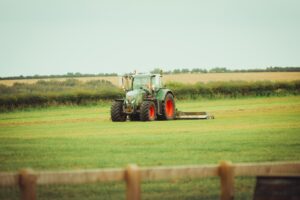 The Importance of Insuring Farm Vehicles
The Importance of Insuring Farm Vehicles
Farming is an age-old profession that has seen numerous technological advancements over the years. One of the most significant developments in modern agriculture is the use of vehicles and machinery to streamline operations and increase productivity. However, with the introduction of these vehicles comes the need for specialized insurance to protect farmers and their investments.
Understanding Farm Vehicle Insurance
Farming vehicles, such as tractors, harvesters, and plows, play a pivotal role in the daily operations of a farm. They are significant investments that require protection against unforeseen damages, theft, or accidents. This is where farm insurance comes into play. It offers coverage tailored to the unique needs of farmers and their machinery.
Why is it Essential?
- Protection Against Financial Loss: Farm vehicles are expensive. In the event of an accident or damage, the repair or replacement costs can be substantial. Insurance helps cover these costs, ensuring that farmers don’t face financial strain.
- Liability Coverage: Accidents can happen, and sometimes they may result in injuries to others or damage to their property. Liability coverage protects farmers from potential lawsuits and claims.
- Peace of Mind: Knowing that your farm vehicles are insured provides peace of mind. Farmers can focus on their work without constantly worrying about potential risks.
Choosing the Right Farm Insurance Provider
Several insurance providers offer specialized coverage for farming vehicles. Here are a few notable ones:
- Farmers Insurance: Known for its comprehensive coverage options, Farmers Insurance provides policies tailored to the needs of farmers. They offer discounts, fast claim service, and have a wide range of coverage options for various farming vehicles.
- State Farm: Celebrating 100 years of service, State Farm offers competitive rates for life, home, car, and farm insurance. Their policies are designed to protect what matters most to their clients.
- Nationwide: Recognized as a leading provider in farm and ranch insurance, Nationwide ensures that farmers’ properties and operations are well-protected. They offer specialized coverage options for different farming needs.
Final Thoughts
The agricultural sector is the backbone of many economies. As technology continues to evolve, the reliance on farming vehicles will only increase. It’s crucial for farmers to understand the importance of insuring their vehicles and choose a provider that aligns with their needs. It is also important to use sites such as Bilforsikring and Gocompare
By investing in the right insurance policy, farmers can safeguard their machinery, protect their livelihood, and ensure the continued growth and success of their operations.